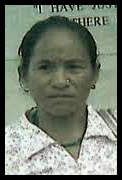 |
| Dr. Kermit Gosnell |
(NAF). According to their web site, "The mission of the National Abortion Federation is to ensure safe, legal, and accessible abortion care, which promotes health and justice for women." (emphasis in the original)
NAF's actions with regard to Kermit Gosnell illustrate exactly how dedicated this organization truly is to the "safe" part of "safe, legal, and accessible abortion care." Their dedication to "accessible" can not be doubted, given their willingness to allow Gosnell to continue his practice without let or hindrance even after one of their inspectors had seen his clinic with her own eyes. The National Abortion Federation has shown such dedication to "accessible" in the past.
In 1991, when 60 Minutes was investigating an abortion mill where one woman had been allowed to die and another left incapacitated, Barbara Radford, then-president of the National Abortion Federation, defended the head-in-the-sand attitude the organization took toward safety issues by saying, "We want to make sure that women have choices when it comes to abortion services, and if you regulate it too strictly, you then deny women access to the service."
Judging by the organization's actions, or rather lack thereof, regarding Gosnell, the "choices when it comes to abortion services" NAF wants women to have includes the quality of services provided by practitioners like Kermit Gosnell and facilities like his Women's Medical Society. The NAF evaluator testified to the Grand Jury about what she observed during the site visit on December 14 and 15, 2009:
 |
| Women's Medical Society |
Most alarming was the bed where Gosnell told her out-of-state patients were allowed to spend the night. These patients were unattended and it was difficult to locate the bathroom facilities and the exits. Such a practice does not meet NAF protocols.
The NAF evaluator watched a few first-trimester procedures. She noticed that no one was monitoring or taking vital signs of patients who were sedated during procedures. She asked Gosnell about the pulse oximeter that should have been used for monitoring, but he told her it was broken. Apparently, Karnamaya Mongar’s death a month earlier had not caused Gosnell to obtain equipment that worked.
The evaluator did not observe Gosnell’s practice of allowing unlicensed workers to sedate patients when he was not at the facility, as she was there only when Gosnell was there. Such a practice would not comply with NAF standards. The evaluator did note, however, that while she was talking to Gosnell in his office, a patient appeared to have been sedated by one of the staff. Such an action does not comport with NAF standards either. The evaluator cautioned Gosnell that he should make sure he was complying with state requirements because many states – including Pennsylvania – do not allow unlicensed workers to administer IV medication.
 |
| Clinic anesthesia chart created by 16-year-old employee |
The evaluator explained to the Grand Jury, as did several medical experts, that because everyone reacts differently to anesthesia, a doctor has to be prepared for a patient to slip into a level of sedation beyond that intended. In cases in which Gosnell’s objective was deep sedation, therefore, he should have been prepared for the patient to react as if under general anesthesia. Significantly, it is not uncommon for patients under general anesthesia to lose the ability to breathe on their own. Gosnell’s clinic – without the drugs, staff, or equipment necessary to monitor, resuscitate, or assist his patients in breathing – was not even close to meeting NAF standards or any other standard of care. The evaluator noted that Pennsylvania requires that anesthesia be administered only by licensed personnel, a regulation that Gosnell failed to follow even during the NAF review.
 |
| Consent form Click to enlarge. |
Aside from these life-threatening practices, the evaluator noted numerous deficiencies in the clinic’s recordkeeping, including no notation of RH blood-typing and no record of sedation medications administered or the level of sedation. The clinic’s consent procedures also failed to meet NAF standards. Even with the evaluator watching, patients were not being informed of the risks of the medications, the sedation, or the procedure itself.
The evaluator testified that during the “counseling” she witnessed, a patient was told that Pennsylvania requires a 24-hour waiting period between when a patient is counseled and when the abortion can be performed. After stating the requirement, however, the counselor, according to the evaluator, said: “Okay, well. When do you want to come back for the abortion? Do you want to come back at 8 p.m.?” When the patient’s mother said, “but I thought we had to wait 24 hours,” the staff person responded, “if you want to come back at 8 p.m., you can come back at 8 p.m.”
Patient confidentiality is another important standard for NAF, and another that Gosnell flagrantly violated. The evaluator was troubled to find:
Throughout the office, there were patient charts everywhere. On desks, on this – the area in that upstairs sleeping area by the sleeping room. There were piles and piles and piles of medical records. That was – if that were in an area that was closed off and nobody had access to it, charts being stored there weren’t a big deal, but if there were patients in the sleeping room, who had to leave there to go to the restroom, they had full access to all of these people’s medical information if they wanted to look through it, it was very, very concerning to me.When asked if she had ever seen anything like the conditions and practices she observed at Gosnell’s clinic in any of the roughly one hundred clinics she has visited in the United States, Canada, and Mexico, the evaluator answered: “No.”
Based on her observations, the evaluator determined that there were far too many deficiencies at the clinic and in how it operated to even consider admitting Gosnell to NAF membership. On January 4, 2010, she wrote to Gosnell informing him of NAF’s decision and outlining the areas in which his clinic was not in compliance. The evaluator told the Grand Jury that this was the first time in her experience that NAF had outright rejected a provider for membership. Usually, if a clinic is able to fix deficiencies and come into compliance with the standards, NAF will admit them. Gosnell’s clinic, however, was deemed beyond redemption.
Gosnell's application was denied. This was the only case in the evaluator's knowledge in which an abortion facility's application was outright rejected, with most facilities being allowed to remedy any defects. While noting that they had no legal burden to do so, the Grand Jury questioned why an organization which supposedly exists to ensure access to safe abortion care for women did not report the gross inadequacies of the Women's Medical Society to the authorities.
 |
| Atlantic Women's Medical Service |
 The first actions they failed to take were both years earlier and ongoing. Those inactions are in regard to Atlantic Women's Medical Service, the NAF member clinic where Gosnell worked part-time. Does the National Abortion Federation do nothing to ensure that the quality of doctors who work at their member clinics is at least adequate? Do they have no policy guidelines for vetting doctors? Do they have no mechanism for checking on the backgrounds of the doctors their clinics use before admitting those clinics as members? Do they not verify the quality of doctors their clinics use periodically in order to ensure ongoing quality of care in those member clinics? Whatever they might have in writing, clearly in actual practice they do nothing to ensure that their member clinics only use doctors who can be trusted to provide their patients with at least minimal quality of care.
The first actions they failed to take were both years earlier and ongoing. Those inactions are in regard to Atlantic Women's Medical Service, the NAF member clinic where Gosnell worked part-time. Does the National Abortion Federation do nothing to ensure that the quality of doctors who work at their member clinics is at least adequate? Do they have no policy guidelines for vetting doctors? Do they have no mechanism for checking on the backgrounds of the doctors their clinics use before admitting those clinics as members? Do they not verify the quality of doctors their clinics use periodically in order to ensure ongoing quality of care in those member clinics? Whatever they might have in writing, clearly in actual practice they do nothing to ensure that their member clinics only use doctors who can be trusted to provide their patients with at least minimal quality of care.Further inactions follow the site inspection and the rejection of Gosnell's application. Why was there no word put out, at least among their member clinics, to beware of Gosnell? Why were National Abortion Federation member clinics not instructed to immediately sever any existing ties they might have with Gosnell and to blacklist him as a future employee?
 |
| Karnamaya Mongar |
Gosnell [relied] on referrals from other areas where abortions as late as 24 weeks are unavailable. More and more of his patients came from out of state and were late second-trimester patients. Many of them were well beyond 24 weeks. Gosnell was known as a doctor who would perform abortions at any stage, without regard for legal limits. HisSurely significantly fewer women would have been subjected to the horrors and risks of Gosnell's practice if referrals from other clinics had dried up. The National Abortion Federation had a chance to protect at least those women who were getting referrals from those clinics, yet failed to take any action toward that end.
patients came from several states, including Delaware, Maryland, Virginia, and North Carolina, as well as from Pennsylvania cities outside the Philadelphia area, such as Allentown.
If one is convinced that late abortions are beneficial to women there are, after all, other abortion facilities in the area that clinics could have sent women to. There is one clinic each in New Jersey and New York that take patients to 24 weeks and one in Maryland that takes patients who are even past 26 weeks. Granted, two of those facilities are documented not to be exemplary, but "better than Gosnell" is not a high bar. Surely it was a goal that the National Abortion Federation could have urged other clinics to aim for and a goal the clinics in question could easily have attained.So far, nobody has asked the National Abortion Federation what excuses they can possibly have.
No comments:
Post a Comment